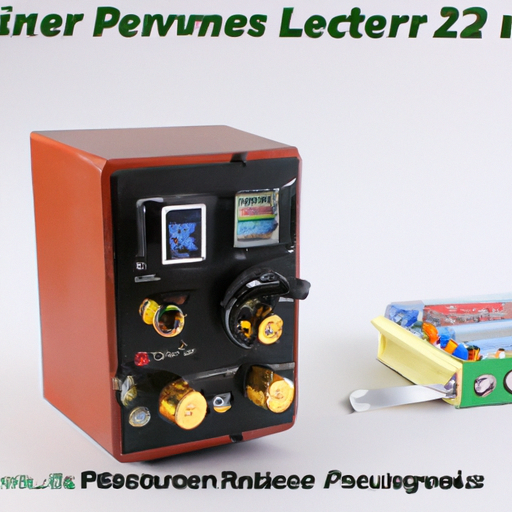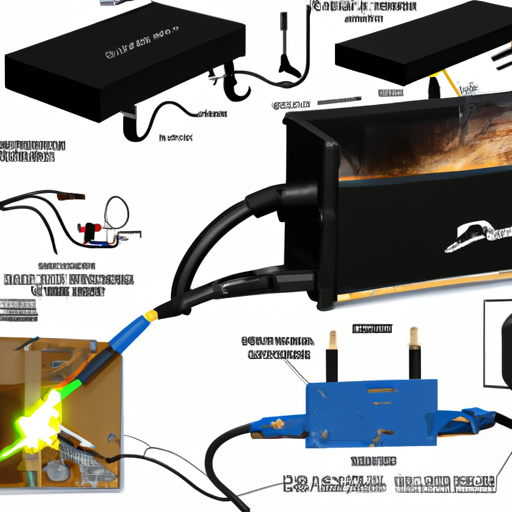Are you curious about power inverters and what they actually do? Well, look no further! This article aims to provide you with a clear understanding of power inverters and how they work. Whether you're a tech enthusiast or someone who wants to be prepared in case of a power outage, this article will break it down for you in a friendly and accessible manner. So, let's get started on unraveling the mysteries of power inverters!
Understanding Power Inverters

Introduction to Power Inverters
Have you ever wondered how you can power your electronic devices or appliances when you're away from a traditional power source? That's where power inverters come into play. A power inverter is a device that converts direct current (DC) into alternating current (AC), enabling you to use electrical devices designed for AC power from a DC power source, such as a car battery or solar panels. In simpler terms, it allows you to use your electronics or appliances even when you are away from a traditional power outlet.
Basic Principles of Power Inverters
To understand how power inverters work, it's essential to grasp the basic principles behind them. Power inverters utilize electronic components, such as transistors and capacitors, to convert the DC power from the source into a high-quality AC power output. This conversion is achieved through a two-step process. In the first step, the DC input is converted into a high-frequency AC signal. Then, in the second step, this high-frequency AC signal is converted into a stable AC output wave, mimicking the regular power found in traditional outlets.

Types of Power Inverters
Power inverters come in various types, each designed to suit different power needs and applications. The most common types include:
-
Modified Sine Wave Inverters: These inverters create a rough approximation of the sine wave AC power found in traditional outlets. While they are more affordable, they are not suitable for sensitive electronics or appliances.
-
True Sine Wave Inverters: True sine wave inverters produce a smooth waveform, nearly identical to the AC power from traditional outlets. They are recommended for sensitive electronics and medical equipment due to their clean and reliable power output.
-
Square Wave Inverters: Square wave inverters produce a square waveform, which is not as smooth as a sine wave. They are less common nowadays and suitable for basic applications where the precision of the power output is not critical.
Choosing the Right Power Inverter
When selecting a power inverter, it's crucial to consider your specific power requirements, as well as the type of electrical devices or appliances you intend to power. Factors to consider include the wattage capacity of the inverter, its waveform type, input voltage range, durability, and safety features.
To calculate the wattage capacity you need, add up the power ratings (in watts) of all the devices or appliances you wish to power simultaneously. It's important to choose an inverter with a capacity slightly higher than your total power requirement to ensure optimal performance.

Power Inverter Components
Power inverters consist of several essential components that work together to convert and regulate the power. The key components include:
-
DC Input: This is where the direct current (DC) power from the source, such as a battery or solar panel, is connected to the inverter.
-
Power Conversion Circuitry: This circuitry is responsible for converting the DC input into AC output. It consists of transistors, capacitors, and other electronic components that facilitate the conversion process.
-
Output Outlets: These are the ports where you can connect your devices or appliances to receive the AC power generated by the inverter.
-
Control Panel: The control panel typically includes an on/off switch, display indicators for input and output voltage, and sometimes additional features, such as USB ports or cooling fans.
Inverter Efficiency and Power Output
The efficiency of a power inverter is an essential factor to consider, as it determines how well the inverter converts DC power to AC power. Inverter efficiency is measured as a percentage, with higher percentages indicating more efficient conversion. A higher-efficiency inverter will waste less power during the conversion process, resulting in more power available for your devices.
The power output of an inverter is typically denoted by its wattage capacity. This rating specifies the maximum power the inverter can deliver continuously without overheating or damaging its components. It's crucial to choose an inverter with an adequate power output to ensure your devices or appliances can operate effectively.

Power Inverters and Voltage
Voltage is an important consideration when using power inverters. In most countries, residential and commercial power outlets provide AC power at a voltage of 110-120 volts or 220-240 volts. When using power inverters, it's essential to match the voltage of your devices or appliances to the output voltage of the inverter.
Some power inverters offer dual voltage outputs, allowing you to switch between different voltage levels. This flexibility can be beneficial when traveling to countries with different power standards or when using appliances with varying voltage requirements.
Power Inverter Applications
Power inverters have a wide range of applications, making them invaluable in various situations. Here are some common uses of power inverters:
-
Camping and Outdoor Activities: Power inverters enable you to power essential devices, such as lights, fans, refrigerators, or even charge your electronic devices while enjoying the great outdoors.
-
Emergency Power Backup: In the event of a power outage, a power inverter connected to a battery can provide temporary power to keep essential appliances running, like lights, refrigerators, or medical equipment.
-
Vehicles: Power inverters are commonly used in cars, RVs, boats, or trucks to power devices or appliances that are typically designed for AC power, such as laptops, phones, mini refrigerators, or even power tools.
-
Renewable Energy Systems: Power inverters are an essential component in solar or wind power systems. They convert DC power generated by solar panels or wind turbines into AC power suitable for use in homes or businesses.

Advantages and Disadvantages of Power Inverters
Power inverters offer several advantages and disadvantages that are important to consider before making a purchase decision.
Advantages:
-
Portability: Power inverters are compact and portable, allowing you to take them wherever you need AC power, whether it's outdoor excursions, road trips, or emergency situations.
-
Versatility: With the right power inverter, you can power a wide range of devices or appliances, providing flexibility and convenience.
-
Energy Efficiency: High-quality power inverters can have excellent energy efficiency, minimizing power wastage during the conversion process.
Disadvantages:
-
Cost: Depending on the type and capacity, power inverters can be relatively expensive, especially if you require higher wattage or true sine wave output.
-
Compatibility: Not all electronic devices or appliances are compatible with power inverters. Some devices may not function properly or may get damaged if used with an incompatible inverter.
Common Issues and Troubleshooting with Power Inverters
While power inverters are generally reliable, they may sometimes encounter issues that can affect their performance. Here are some common problems you may encounter and possible troubleshooting steps:
-
Faulty Connections: Check all connections between the inverter and the power source, as well as the connections from the inverter to your devices. Ensure they are secure and free from any corrosion or damage.
-
Overheating: Power inverters can overheat if they are operating at or beyond their maximum wattage capacity for an extended period. Reduce the load or consider upgrading to a higher-capacity inverter.
-
Low Battery Voltage: If your inverter is not producing the expected output voltage, check the battery voltage. If it is low, recharge or replace the battery.
-
Electrical Interference: Nearby electronic devices or appliances can sometimes cause interference that affects the performance of the power inverter. Move the inverter away from any potential sources of interference.
In conclusion, power inverters are essential devices that allow you to harness AC power from DC sources. By understanding their basic principles, different types, and considerations for choosing the right one, you can confidently select and use a power inverter to conveniently power your devices or appliances in various situations. Remember to consider factors like wattage, waveform type, voltage compatibility, and efficiency to ensure a smooth and reliable power supply. With proper usage and troubleshooting knowledge, you can make the most of your power inverter and enjoy the benefits of portable and versatile power conversion.

